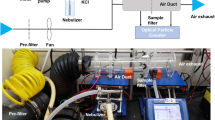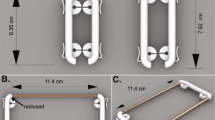Abstract
The SARS-CoV-2 pandemic led to world-wide global shortages in personal protective equipment (PPE) in hospitals. Acute shortages of respiratory protective devices such as N95 respirators led to highly innovative period in which new filter materials, chemical treatment, or new concepts for respirator protective equipment were proposed, which were purported as replacements for inconsistent supply of N95-type respirators. Evidence of this innovation is the vast number of new patents that were filed in the domain of filtering facepiece respirators during the first half of 2020 across North America, Europe and East Asia. Much of this product innovation focussed more on the technical mask performance, and less on user comfort of these new items of respiratory protective equipment. When designing respirator masks, technical performance is commonly used as a “decision gate” between iterative development cycles. From a product design perspective, user comfort is strongly linked to long-term market adoption, so user comfort has been an overlooked factor in the SARS-CoV-2 context. Three prototype folding-style filtering facepiece respirators (FFRs) and one commercially-available medical face mask was posted to 30 participants, who wore the masks, completed the modified R-COMFI survey for each mask. The medical face mask was included as a “control” mask which formed the baseline against which the prototype respirators were compared. The three prototype mask designs (Model A1, A2, B) were fabricated by our research group. Their R-COMFI scores were calculated from the survey data and revealed that Model A1 was the least comfortable, then the Model A2, next the Model B, and finally the medical face mask (control) was rated the most comfortable. Based on the feedback of the evaluation, a heuristic development iteration was performed on the least-comfortable respirator, Model A1, based redesigning the elastic head harness taking into the head anthropometric measurement of the users into account. A re-testing of the Model A1 respirator with a group of 12 participants showed a marked improvement in wearing comfort upon redesign of the head harness.
Access this chapter
Tax calculation will be finalised at checkout
Purchases are for personal use only
Similar content being viewed by others
References
ANTWERP. POWERED BY CREATIVES. Antwerp Design Factory | APBC. https://www.apbc.be/stories/antwerp-design-factory. Accessed 2 Nov 2020
Belgian Federal Public Service Economy, of 03 April 2020 on Conditions with which the supply of mouth masks FFP2 and FFP3 must meet in order to be released. https://economie.fgov.be/nl/themas/ondernemingen/coronavirus/mondmaskers-enfilters/coronavirus-conformiteitseisen. Accessed 26 Dec 2020
Dined.io.tudelft.nl. DINED. https://dined.io.tudelft.nl/en/database/tool. Accessed 2 Jan 2021
LaVela, S.L., Kostovich, C., Locatelli, S., Gosch, M., Eagan, A., Radonovich, L.: Development and initial validation of the respirator comfort, wearing experience, and function instrument [R-COMFI]. J. Occup. Environ. Hyg. 14(2), 135–147 (2017). https://doi.org/10.1080/15459624.2016.1237025. Accessed 18 Oct 2020
Radonovich, L.J., Wizner, K., LaVela, S.L., Lee, M.L., Findley, K., Yorio, P.: A tolerability assessment of new respiratory protective devices developed for health care personnel: a randomized simulated clinical study. PloS One 14(1), e0209559 (2019)
Scan, P., Humann, M.: National Institute for Occupational Safety and Health (NIOSH) Respiratory Health of Healthcare Workers Survey: Results of Cognitive Interviews Conducted March—May 2013. Stacks.cdc.gov. https://stacks.cdc.gov/view/cdc/47279. Accessed 18 Oct 2020
Acknowledgments
This research was funded by Industrial Research Fund (IOF) of the University of Antwerp, grant number FFI200119.
Author information
Authors and Affiliations
Corresponding author
Editor information
Editors and Affiliations
Appendices
Appendix 1: R-COMFI Scores




Appendix 2: R-COMFI - Model A1 Re-design


Rights and permissions
Copyright information
© 2021 The Author(s), under exclusive license to Springer Nature Switzerland AG
About this paper
Cite this paper
Warndorff, V. et al. (2021). Heuristic Evaluation of Respirator Masks: Incorporating NIOSH Respirator Mask Comfort Surveying in the Product Design Process. In: Rebelo, F. (eds) Advances in Ergonomics in Design. AHFE 2021. Lecture Notes in Networks and Systems, vol 261. Springer, Cham. https://doi.org/10.1007/978-3-030-79760-7_107
Download citation
DOI: https://doi.org/10.1007/978-3-030-79760-7_107
Published:
Publisher Name: Springer, Cham
Print ISBN: 978-3-030-79759-1
Online ISBN: 978-3-030-79760-7
eBook Packages: EngineeringEngineering (R0)




